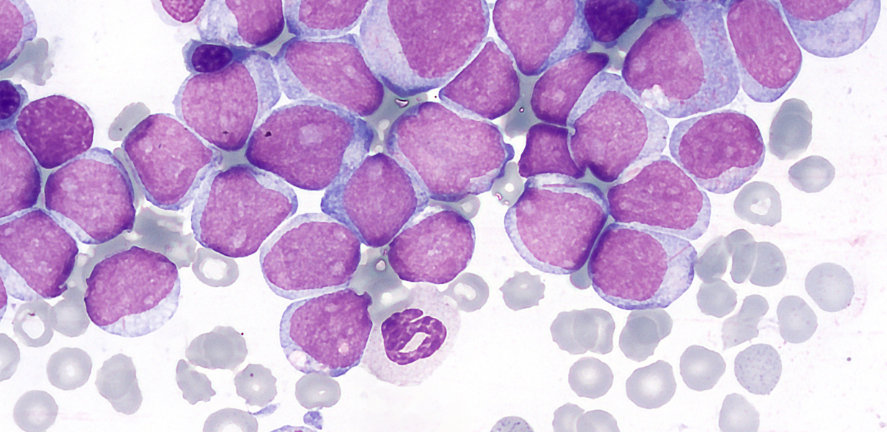
Submitted by Laura Puhl on Wed, 23/04/2025 - 14:37
A new study from Dr Konstantinos Tzelepis at the Cambridge Stem Cell Institute has discovered a new way to detect and target Acute Myeloid Leukaemia (AML), a fast growing, aggressive, blood cancer that requires urgent treatment. The research was published today (23 April) in Nature Biotechnology.
AML is the second most common leukaemia type, with 3,100 people diagnosed in the UK every year. However, it has some of the lowest survival rates of any cancer: nearly 80% of people diagnosed with AML do not survive beyond five years.
Dr Tzelepis, who was awarded a John Goldman Fellowship by Leukaemia UK in 2020, was part of a discovery that found a protein called Nucleophosmin (NPM1) – which was thought to only be present inside most normal cells – is also found on the surface of leukaemia cells. This discovery challenges long-standing assumptions about cancer biology and offers potential new detection and treatments for AML, as well as other aggressive cancers with immunotherapy.
In immunotherapy, scientists look for proteins on the outside of cancer cells to help the immune system recognise and attack them, without harming healthy cells. While there are many immunotherapy treatments available, some subtypes of leukaemia do not respond to them. This research has identified a new protein target which could address this gap in treatment.
To test this idea, Dr Tzelepis, alongside collaborators at the Boston Children's Hospital and Harvard Department of Stem Cell and Regenerative Biology in the US, developed a new antibody that targets NPM1 on the cell surface.
They studied its effects in laboratory models and patient samples, and found that the treatment successfully killed AML cells, prolonged survival, and restored healthy blood production—all without noticeable side effects, which is not offered by current treatments.
One of the biggest challenges in treating AML is that many treatments only work for patients with certain genetic mutations, leaving many patients without any effective options. However, NPM1 levels are higher in cancer and its mutations are often found in AML, making it a treatment target that could help more patients.
Importantly, NPM1 is found in large amounts on leukaemia stem cells (LSCs)—the cells responsible for AML progression and relapse. Targeting these cells is difficult, but could lead to treatments that not only get rid of leukaemia but also stop the disease from returning.
If further pre-clinical and clinical studies confirm these findings, NPM1-targeted therapies could represent a major breakthrough for AML, and potentially for other cancers as well (e.g. prostate and colorectal cancers).
This collaborative study was co-first authored by Dr Benson George of the Flynn Lab in the US and Dr Maria Eleftheriou in the Tzelepis Lab at CSCI.
Dr Konstantinos Tzelepis said: “The development of novel cancer therapies is strongly dependent on biomedical research and the discovery of new cancer biology. I am very pleased that our collaborative work has led to a promising biotechnology approach to targeting cancers of unmet medical need, like AML. Our aim is to derisk and expedite the translation of these discoveries into new effective treatments.”
Dr Maria Eleftheriou said: “Current treatments for AML often come with severe side effects and don’t always provide a lasting solution. This exciting discovery is at an early stage but has the potential to improve survival rates and quality of life for AML patients, as well as offering hope for developing similar targeted therapies for other cancers in the future.”
Dr Ryan Flynn said: “Our work highlights how the combination of basic and translational science can be effectively combined to advance new ideas. In the past, targets like NPM1 were disregarded because there was no logic for it to be a marker, but combining our mutual interests in RNA biology pushed us to do the work to that resulted in this exciting discovery.”

